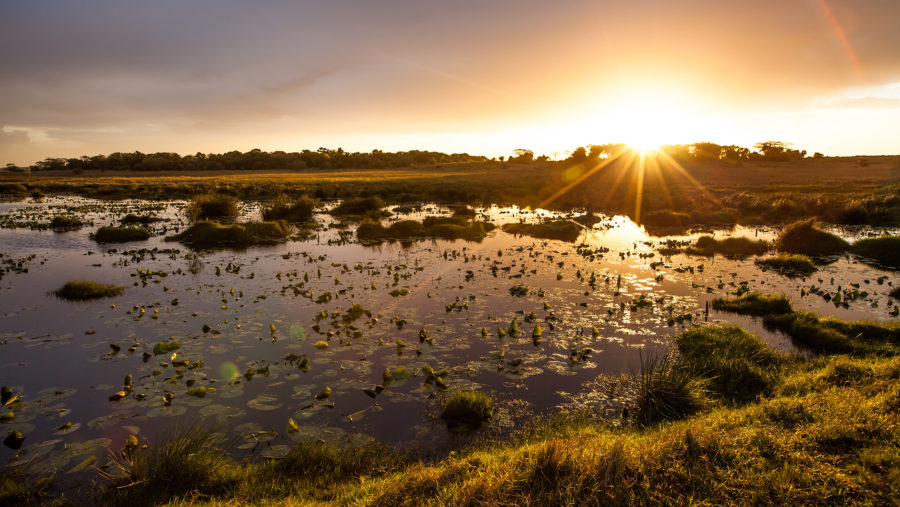
Increasing numbers of businesses and organizations are turning to EDGE’s environmental expertise for coastal and offshore projects, from oil and gas industry infrastructure to large-scale efforts to protect natural resources.
Not only are clients benefitting from EDGE’s extensive knowledge of coastal and offshore environments, they’re also gaining team members who work alongside them to support their goals and expand their organization’s capabilities.
In 2019, EDGE’s third-party NEPA team participated in a variety of Projects along the Gulf coast in coordination with federal entities and developers, the largest of which included an onshore liquified natural gas (LNG) terminal, two offshore oil ports, and a coastal restoration project. Each of these projects involves development of either an Environmental Impact Statement (EIS), or an application that will lead to the development of an EIS. Below are just a few examples of recent EDGE projects.
Rio Grande LNG Project
This LNG terminal and pipeline system, proposed by NextDecade LLC in 2015, calls for the construction of three compressor stations, liquefaction facilities on a 984-acre parcel, truck-loading facilities, and a marine loading dock on the Brownsville Ship Channel. The project’s 138-mile, parallel 42-inch pipelines would connect the LNG export terminal to the Agua Dulce Gas Hub near Corpus Christi.
Before considering project approval, the Federal Energy Regulatory Commission (FERC) needed to assess its potential effect on the environment. EDGE was brought in as the third-party contractor to help FERC prepare an EIS.
EDGE assisted FERC in developing the EIS in accordance with all applicable environmental statutes, including the National Environmental Policy Act (NEPA), Section 106 of the National Historic Preservation Act, Section 404 of the Clean Water Act, Section 7 of the Endangered Species Act, the Marine Mammal Protection Act, Magnuson-Stevens Fishery Conservation and Management Act, Executive Order 11898 (Environmental Justice), and the Coastal Zone Management Act.
Throughout the time EDGE worked on the EIS, its team functioned as part of the FERC staff, which contributed to project efficiency, effective communications, and the ability to meet the EIS goals. EDGE applied its knowledge of regulatory requirements and FERC practices to help streamline the EIS development process. EDGE also planned and participated in FERC-sponsored scoping sessions and public-comment meetings, coordinated with cooperating agencies and addressed their comments, and tracked and addressed more than 2,000 public comment letters about the proposed LNG terminal and pipeline project.
The final EIS was issued in April 2019. FERC authorized the Project in November 2019 and EDGE continues to assist the FERC in the activities leading up to the start of Project construction.
Coastal Restoration
The Mid-Barataria Sediment Diversion (MBSD) is a complex project with straight-forward goals: building and sustaining wetlands in Louisiana. If approved for construction, the MBSD would result in a conveyance structure spanning from the Mississippi River to the mid-Barataria Basin. Using gravity and engineering controls, the structure would transport sediment, freshwater and nutrients from the Mississippi River into the Barataria Basin.
In 2017, EDGE was enlisted as a subcontractor to assist in the preparation of a NEPA-compliant, United States Army Corps of Engineers (USACE)-led EIS. EDGE, which continues to support this effort, coordinates with its partner firms, the USACE and the Trustee Implementation Group (TIG) on key issues, including how the Mississippi River inputs could change the physical and environmental character of the Barataria Estuary. EDGE is assisting in the assessment of potential impacts on aquatic resources, wetlands, wildlife and terrestrial vegetation, marine mammals, land use, visual resources, cultural resources, air quality, noise, and hazardous materials.
Deepwater Ports
Building on EDGE staff’s experience with the initial wave of deep-water ports over a decade before, EDGE was enlisted by an engineering firm to assist in the development of a Deepwater Port License Application for the Texas Gulf Terminals Project (TGTI) about 12.7 nautical miles off the coast of North Padre Island, Texas. The Project, if approved, will include pipeline infrastructure, a booster station, and an onshore oil storage terminal facility. Very Large Crude Carriers (VLCC) will load cargo using a single-point mooring (SPM) buoy system that will be constructed in federal waters. The EDGE team initially focused on the offshore and inshore (Laguna Madre) environmental aspects of TGTI, including the project’s potential impact on the aquatic environment, commercial and recreational fisheries, wildlife and protected species, noise, cumulative impacts, essential fish habitat, and ichthyoplankton, but assisted with additional resources as needed.
After a successful partnership with the engineering firm on the TGTI Project, EDGE was enlisted to assist on a second Deepwater Port License Application (the Bluewater Deepwater Port). This project also includes pipeline infrastructure beginning at a mainland location and crossing inshore waters and islands before going offshore and terminating at one of two offshore SPM buoys, about 17 miles off Aransas Pass, Texas. EDGE staff were asked to develop the same resource sections as the prior project, but also Water Quality; Socioeconomics; Coastal Zone Use, Recreation, and Aesthetics; and various appendices.
Before either Project can come to fruition, they must be approved by the United States Coast Guard (USCG) and United States Maritime Administration (MARAD), who will develop an EIS based largely on data from the respective application.
Looking Forward
EDGE expects demand for offshore and coastal project support to continue building in the next year to accommodate continued energy exports, port improvement/modification, and coastal restoration.
The firm offers clients a comprehensive package of environmental knowledge and expertise, a full range of services to support project development, and a relationship-driven approach to client services.
